Everything you need to know about the ski camus
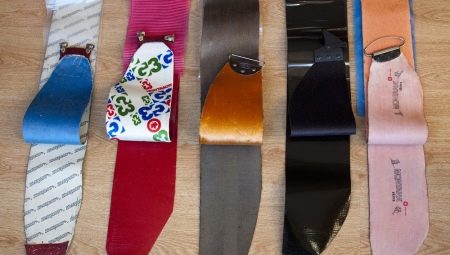
Every beginner who first encounters skiing is surprised to notice that this means of transportation across snow-covered expanses glides forward and backward equally well. At the same time, an inept rider cannot even get under way. There is no need to talk about driving on loose snow without a ski track, or even more so on sections going uphill. A device called a kamus will help to solve the problem. What constitutes a kamus and how to choose skis with a lining will be discussed in this article.
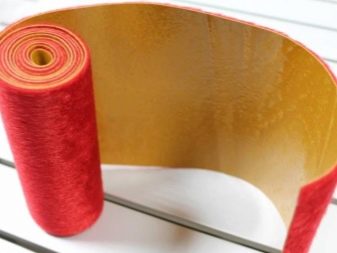
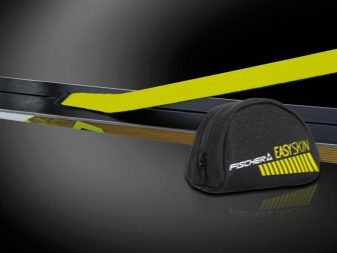
What it is?
The concept of "kamus" has long been popular among hunters. This is what the fishermen called the skin of a deer that grows on its feet above the hooves. Further, this term began to be called an accessory, with the help of which hunting skis were improved.
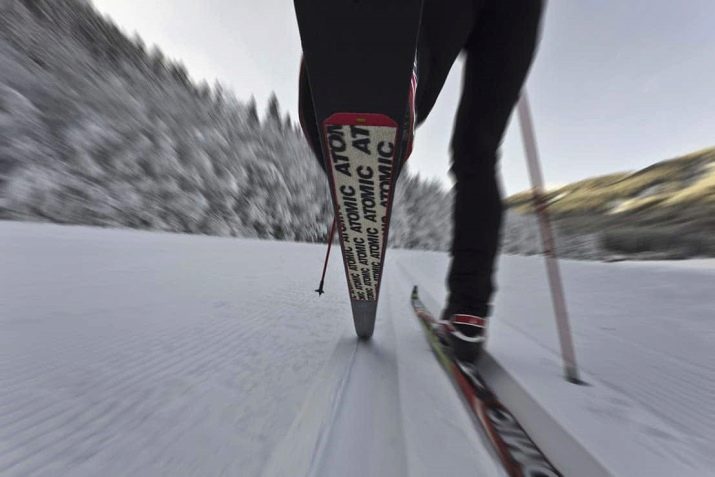
A ski camus is a fur glued or padded onto a sliding surface in contact with snow. The hunters were the first to attach the fur lining to the skis. They used this device to facilitate movement on loose snow on uneven surfaces while chasing prey. This improvement eliminated the skis from slipping back.
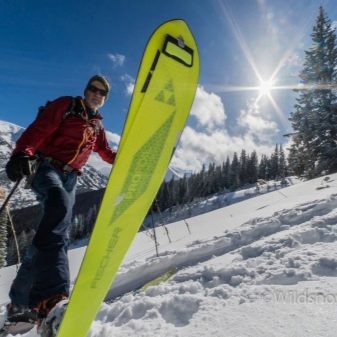

Nowadays, skis with camus are recommended:
- people who do not have proper training and experience in using ointments during the operation of skis;
- amateurs who use the "classic" move, but save money on preparing equipment;
- for professionals participating in long marathons, such equipment provides stable performance throughout the entire route;
- professional athletes as training equipment;
- lovers of ski tourism.
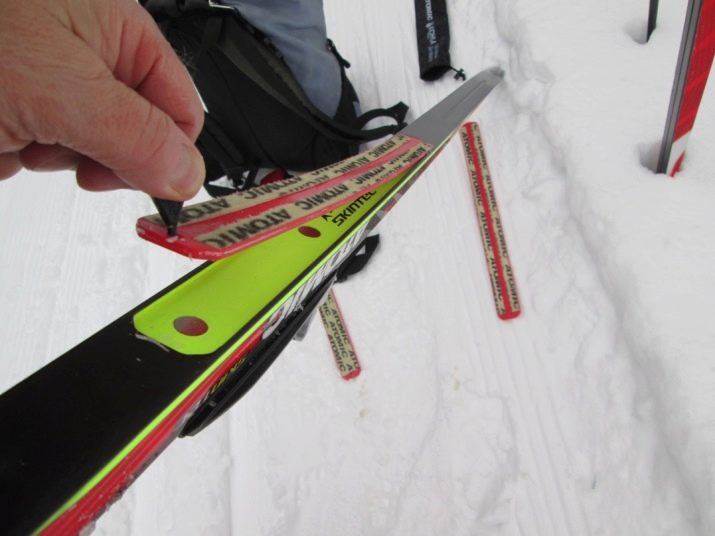
Originally, the ski liner was made from the skins of wild animals. For this purpose, the skins were used, removed from the lower legs of moose, deer, roe deer, and musk deer. It is in this place on the skin of animals that the largest amount of hard nap is found. Seal skins were also used. However, the lining made of moose skins is still considered the most durable.
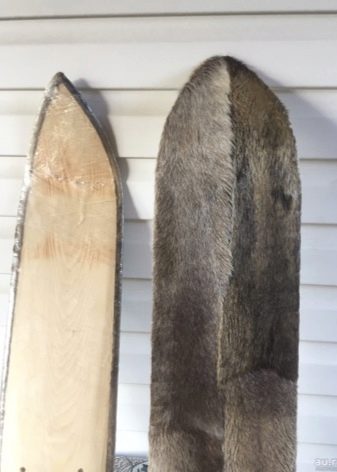
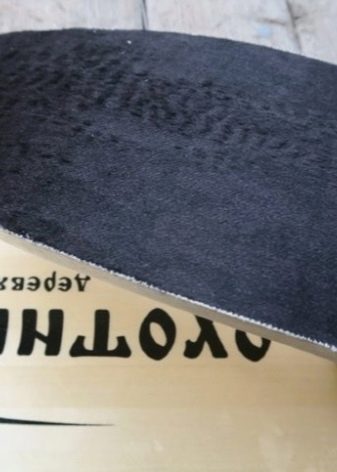
Nowadays, wool of angora goats, as well as synthetic materials, are used for the production of kamus. Skis with such a lining are perfect for hunters, tourists and sportsmen.
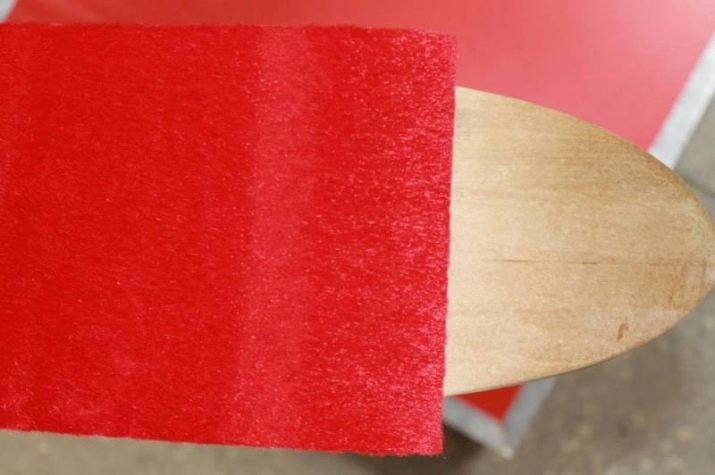
Lined models have the following advantages:
- Camus has unidirectional fibers. While moving forward, they are smoothed, and when sliding backward, they bulge and slow down the skis.
- Equipment with such a device is characterized by stable grip on the snow surface throughout the entire route. At the same time, the best ointments are erased after passing 20 km of the track.
- The camus has practically no effect on the weight of the equipment.
- Modern equipment with the use of such technologies is capable of "nursing" up to 1000 km.
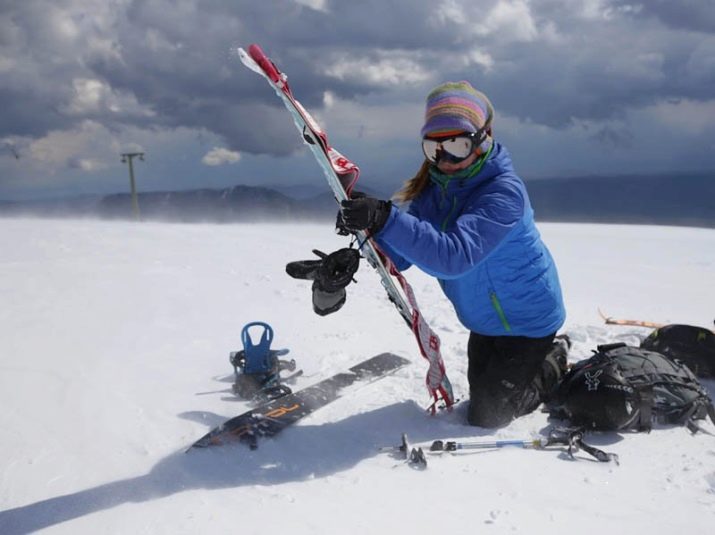
The pile of the camus is located strictly along the skis, which prevents them from shifting to the sides and maintains good glide. Such equipment is lightweight, provides reliable grip on snow and good speed.
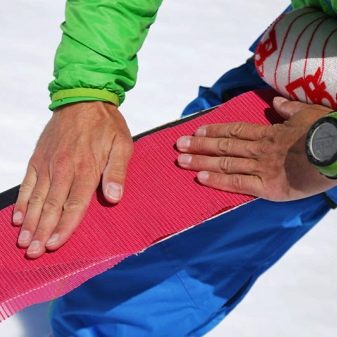
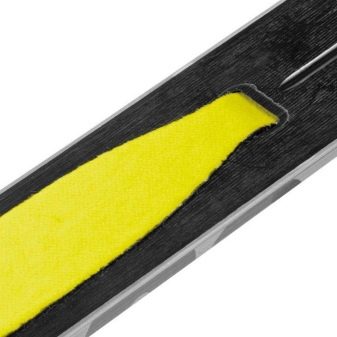
Description of species
For the manufacture of kamus, the skins of wild animals are no longer removed, they are usually replaced with artificial materials. Mohair linings are currently used as accessories from natural raw materials.
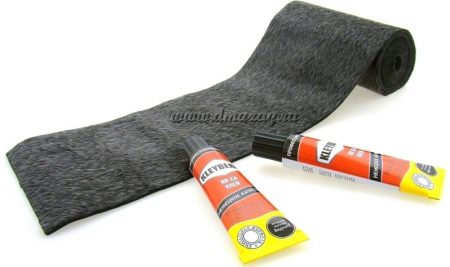
100% mohair options are distinguished by the following qualities:
- excellent sliding;
- minimum weight;

The only drawback of such lining is their fragility.
Using the latest technologies, they learned to make kamus from a synthetic material - nylon.
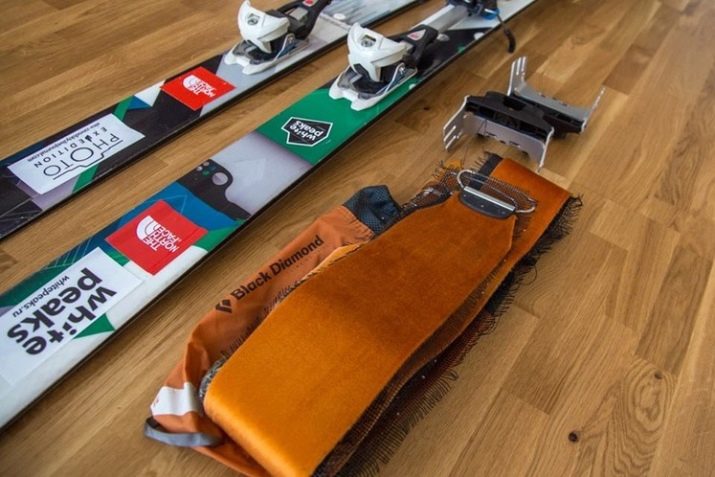
Artificial camus is characterized by the following indicators:
- characterized by high strength and durability;
- is more severe;
- the degree of slip is lower;
- gives a lower speed of movement;
- such products are cheaper than natural materials.
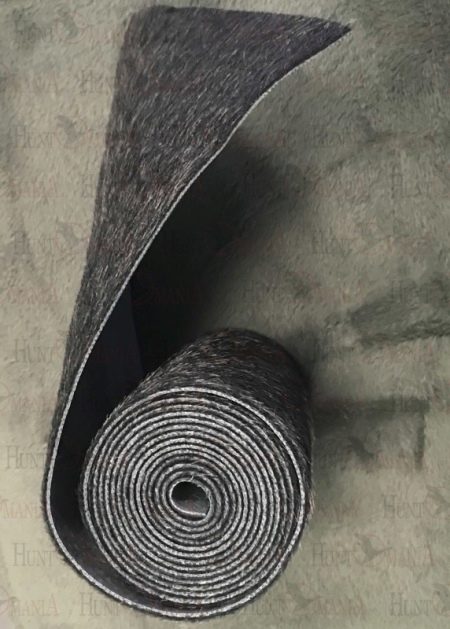
Models with synthetic camus are suitable for thrifty outdoor enthusiasts who do not want to update their equipment every year.
The linings are also made from mixed materials.
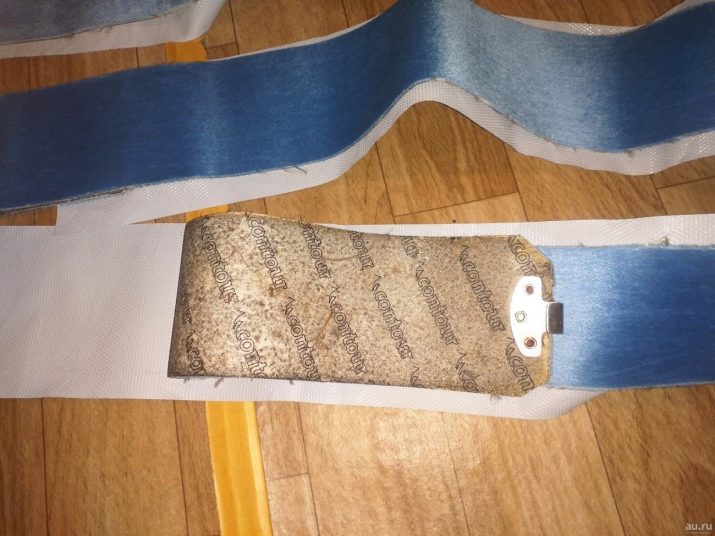
Similar products:
- have a longer service life;
- are not inferior in the level of sliding;
- practically do not absorb moisture.
Skis with such a lining are convenient during transportation. Most often they are used for travel in the mountains.
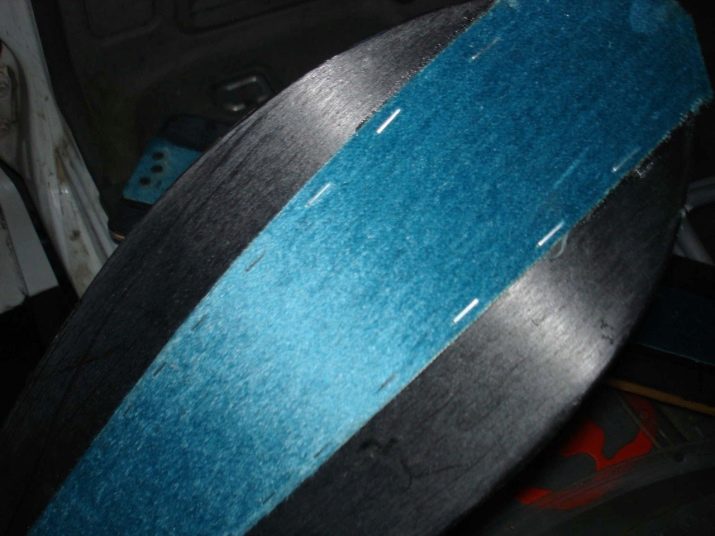
The price for such products may vary. The cost depends on the form in which the accessory is sold. Fixed lengths of lining are much more expensive than synthetic material on a roll. Also, the cost is influenced by the width of the material, the composition and properties of the glue, the presence of special fasteners. Most of the products made of synthetic kamus are suitable for use in conditions where the temperature is not lower than -20 degrees. However, there are also more frost-resistant options.

Choosing skis with camus
The choice of skis with camus is no different from the selection of ordinary ski equipment. In this process, the main thing is to strictly adhere to two main criteria, which are to take into account the height and weight of the athlete.
- The length is selected taking into account the height of the skier, adding 20-30 centimeters to it.
- Accounting for weight is taken with a large margin, since it is necessary to select equipment with much greater rigidity. In the phase of sliding on skis of normal stiffness, the camus will burrow into the snow and resist movement. On hard skis, in this phase, the fleecy lining will stay above the snow, which will provide a high speed.

It is worth paying attention to the fact that such skis require a more correct jogging technique. In this regard, equipment for leisurely walks is selected taking into account the lower indicators in the weight range. Cross country skis for competition or training pick up 10-15 kg more than the weight of the skier.
An important criterion when choosing is also the purpose for which the inventory will be used. So, hunting skis are recommended to be selected with fur lining. The most famous company offering such a product is Poskryakov. In the production of goods, horse fur is used as a raw material.
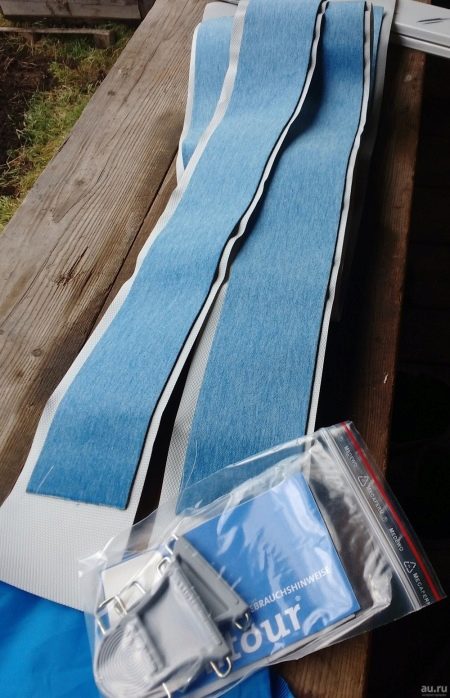
The advantages of such models are:
- silent running;
- insignificant weight.
Cross-country skiing with camus has its pros and cons.
Their advantages:
- while climbing the mountains, the skis do not slip back;
- no need to use ski lubricants;
- they are convenient for use in any weather conditions;
- facilitate movement on uneven terrain;
- there is no slippage even on an icy track.
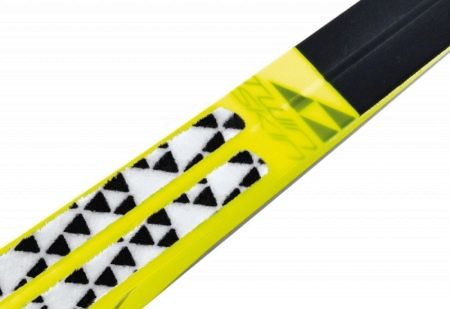
The disadvantages include:
- slight slowdown in movement speed;
- increase in ski weight.
But alpine skis are better to buy with a mohair lining. It is made using mohair from angora goats and synthetic nylon fibers.
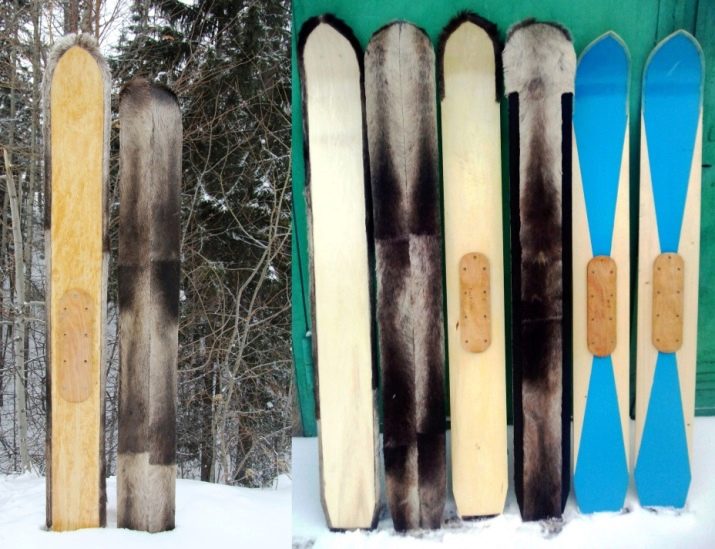
When choosing children's models, they take into account which skis are needed - mountain or cross-country. However, there are also universal options. Also, when choosing, they pay attention to the age, height and weight of the child.
How to fix it?
To attach the camus to the skis, use clips, hooks, staples.

Many hunters use their own specific options for attaching an accessory.
The most popular ones are:
- Drying the kamus directly on the skis. Fastening is made by wrapping the skis with a raw skin. Once completely dry, this wool lining holds firmly even without glue.
- Gluing a narrow strip with glue. In this case, the strip is taken over the entire length of the ski. When driving through a bush covered with snow, there is a loud noise from the edges that are not covered with skin, which is considered a disadvantage.
- Fastening with polyurethane foam. When using this method, the gas is initially released from the cartridge, the remaining contents are used as glue.
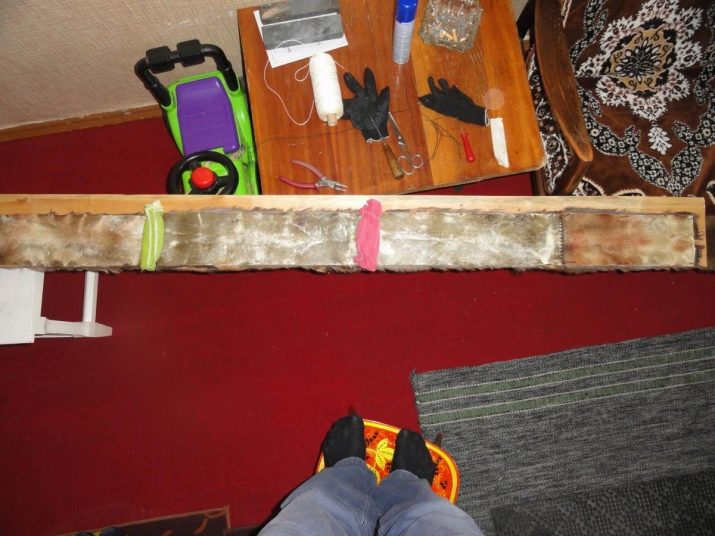
In addition to the above options, the lining can be fitted using small nails or furniture staples.
On tourist skis, the camus can be installed under the block or over the entire length. Short pads are used for walking on easy trails, full length is used in difficult conditions.
Install the long accessory strips as follows:
- The heel tape retainer clings to the back of the ski. On the back of the camus, from the sticky side, remove the protective paper. The released glue part is glued to the ski.
- Measure the desired length of the tape to the bend of the ski toe. A metal retainer of the rubber toe is put on this place. The excess part is wrapped and glued onto itself, thanks to which the rubber sock is securely attached to the tape. Then, with an effort by stretching the tape, another retainer is put on the toe.
- The protective paper is removed from the tape, the lining is glued to the ski.

The skis are ready for use. If necessary, the camus can be easily removed from the skis.
For skating, a particularly strong attachment of the liner to the skis is required. This is because this style is the fastest and most technically challenging. In this case, the tape must be firmly adhered.
For more information on how to choose a ski camus, see the video below.








